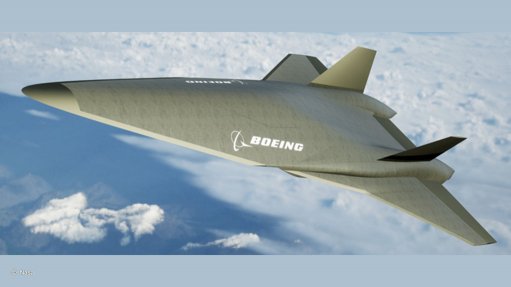
A Boeing concept for a Mach 4 aircraft
Photo by: Nasa
The US National Aeronautics and Space Administration (Nasa) has announced that it is now initiating the next phase of its Advanced Air Vehicles Programme (AAVP). This is focused on developing concepts for, and undertaking studies of, technologies, systems and aircraft that would revolutionise air passenger transport.
“The goal is to enable new aircraft to fly safer, faster, cleaner, quieter, and use fuel far more efficiently,” states Nasa on its website. “Partnering with industry, academia and other government agencies, AAVP pursues mutually beneficial collaborations to leverage opportunities for effective technology transition.”
This new phase will see the issuing of 12-month contracts to two industry consortia to develop concept designs and technology roadmaps for airliners capable of flying at speeds between Mach 2 and Mach 4 (that is, from twice to four times the speed of sound, which is Mach 1). Current airliners cruise at about Mach 0.8. (The speed of sound, in kilometres per hour or miles per hour terms, varies with altitude; Mach numbers are used because they are independent of altitude.) These roadmaps will examine possible options for air travel at such speeds, indicate the challenges and risks, and identify the technologies that will have to be developed, to allow the achievement of air travel at speeds above Mach 2.
“The design concepts and technology roadmaps are really important to have in our hands when the companies are finished,” affirmed Nasa Hypersonic Technology Project manager Mary-Jo Long-Davis. “We are also collectively conscious of the need to account for safety, efficiency, economic, and societal considerations. It’s important to innovate responsibility so we return benefits to travellers and do no harm to the environment.”
The first industry team – first being Nasa’s word – is led by Boeing. The other partners in this team are Exosonic, GE Aerospace, Georgia Tech Aerospace Systems Design Laboratory, Rolls-Royce North American Technologies, and other, unnamed, entities. The second team is led by Northrop Grumman Aeronautics Systems, and its partners are Blue Ridge Research and Consulting, Boom Supersonic and (again) Rolls-Royce North American Technologies.
“We conducted similar concept studies over a decade ago at Mach 1.6 – [Mach] 1.8, and those resulting roadmaps helped guide Nasa research efforts since, including those leading to the X-59 [quiet supersonic research aircraft],” pointed out Nasa Commercial Supersonic Technology Project manager Lori Ozoroski. “These new studies will both refresh those looks at technology roadmaps and identify additional research needs for a broader high-speed range.”
Nasa has already, and recently, studied the business case for Mach 2 to Mach 4 airliners. These studies determined that potential passenger markets for such fast airliners existed on 50 established transoceanic routes, particularly across the North Atlantic and Pacific Oceans.